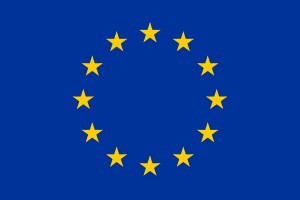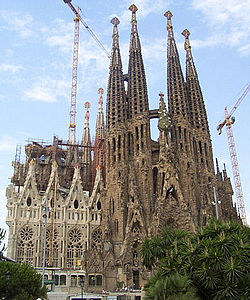


The Colosseum, or Flavian Amphitheatre, is the most important monument in Rome. It was erected when Vespasian was the Roman emperor. It is so called because it replaced Colossum Soli, a colossal statue representing Nero. Here, fights between gladiators and wild animals happened. Later, this amphitheatre became a travertine quarry.In fact, the travertine was reused for more modern monuments. Nevertheless, it is still possible to know how the original building was erected. The division of the seats depended on the social classes of the viewers. The Colosseum could contain 50000 viewers, totally. The building is still divided into three arched storeys. Depending on the storey, the arches are divided by different columns. They are Tuscan on the first storey, Ionic on the second, and Corinthian on the third. The circular plan of the amphitheatre is still preserved. Its external fašade is 160 feet high.

The Cathedral of Milan is the fourth most extended church in Europe. It is a Gothic cathedral started in 1386, but it also shows Renaissance elements. Its plan is almost a Latin cross with a rather short transept. There are also a rather big polygonal apse and vaults created by pointed arches. Statues representing saints and prophets complete its niches and cusps. The plan of the cathedral is divided into one nave and four aisles. Its floor is cosmatesque because it is composed of both light and dark marble. Outside, a high plinth, which is common in the art of Lombardy, is visible. Spires, statues, and buttresses are placed on the top of the cathedral. On the highest spire, is a small golden statue representing the Virgin Mary. The windows of the cathedral are pointed, too. They are decoratd by rosettes. Five gates are placed on the fašade of the cathedral.

The Eiffel Tower is the symbol of Paris and France. It is an iron building and is 324 metres high. It rests on four giants supports connected by frame skirts. It was designed by Gustave Eiffel and erected in 1889. It remained the highest building into the world till 1930. At that time, Trumop Building was erected in New York. Its most important fašades are called "Grenelle", "Ecole Militaire", and "La Bourdonnais". They all show inscriptions celebrating important people that worked for the building. The building is divided into three storeys, which can be reached by stairs or lift. Between the end of the XIX century and the beginning of the XX century, this building was used to experiment with the most modern technological innovations, such as phonographs, telegraphs, strange parachutes, and radio messages. Now, it is still an important economic and cultural centre.

The Sagrada Familia was designed by Antonio Gaudý in 1882. Its erection is current, but the building was consecrated in 2010. Its architectonic style reminds Neo-Gothic architecture, as evidenced by the rosettes, the vaults, the pointed arches, and the spires used. The latter are currently eight, but they are going to be eighteen. They will represent: the twelve apostles, the four evangelists, the Virgin Mary, and Jesus. Two fašades hold sculptures inspired by Jesus' life, mainly Nativity and Passion. A third fašade called "Fašade of Glory" will be created, later. The towers of the building are decorated by words reminding liturgy, such as "Hosanna", "Excelsis", and "Sanctus". They are also decorated by motiffs reminding Cubism. A magic square referred to number 33 and Jesus completes the fašade.

Big Ben is the great clock-tower of Westminster and is placed on the North-Eastern corner of the House of Parliament in London. The whole clock-tower is a Neogothic tower 96.3 metres high. Its current name is Elizabeth Tower. Inside, is a bell called Great Bell. It makes the sound of this clock unique and unmistakable. Big Ben is also rather near Tower Bridge

Parthenon was the most important temple in Athens. In fact, it was placed on the top of its acropolis. It was designed by architects Iktinos and Kallikrates between 447 BC and 438 BC. At that time, Perikles governed over Athens. The temple symbolized the power of Athena over Greece and Asia Minor. In fact, the name of the temple derives from "Athena Parthenos" (Virgin Athena). This was the name of a gold-ivory statue sculpted by Phydias and placed in the cella of the temple. The complex was a Doric temple completed by Ionic elements. These were respectively the orders of its inside and outside columns. The short sides still hold 8 columns, and the long sides still hold 17 columns. Once, the four sides were decorated by groups of metopes representing scenes from Athena's story. Each block outside corresponded to a one inside, so that the temple obeyed a dynamic balance. On the friezes of the cella, were instead friezes representing two processions. One was Panathenaic. In the Middle Ages, Parthenon was transformed into a church dedicated to the Virgin Mary. Later, it was transformed into a mosque. In 1687, Venitians hit Parthenon with a cannonade and destroyed its sculptures, partially. The remaining sculptures were moved to London. Now, they are exposed at the British Museum.